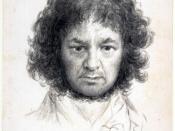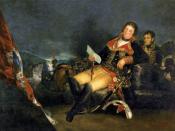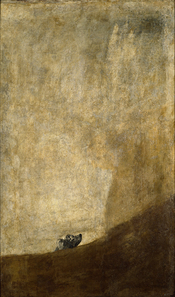Francisco de Goya's The Third of May
"The artist's vision is more important than tradition." Francisco de Goya, a Spanish artist, believed that the most important thing was to draw what he saw rather than following the traditional style. Unlike any other artists of his time, Goya did not tend to imitate Renaissance arts targeting classical subject matters. Instead, he tried to bring the real people and the society that he observed up to the canvas. Francisco de Goya's early life and personal experiences are reflected in his exceptional paintings, such as The Third of May, which has had a lasting effect on the artists that followed.
During his childhood and adolescence, Goya met talented artists who developed his early style and had a great influence on his career and works of art. He was born in the Aragonese town of Fuendetodos located in northern Spain on March 30, 1746.
His father, Jose was a glider master and his mother, Gracia Lucientes, was from a hidalgo family (Weems 1). He grew up in Zaragoza where he attended a religious school, Escuelas Pias, which provided education for the poor of Spain. During his school year, he met his lifelong friend, Martin Zapater, who later exchanged letters with Goya for over twenty-five years (Wagner). Friendship and country were very important to Goya and his career, and it is reflected on his portraits and other works of his family and friends. When Goya was fourteen, he actually began his formal education of art working at the studio of Jose Luzan. Goya himself wrote an autobiography about his four-year training under Luzan:
He was a pupil of Don Jose Luzan in Zaragoza, with whom he learned the principals of drawing and who made him copy the finest engraving that he possessed;...


